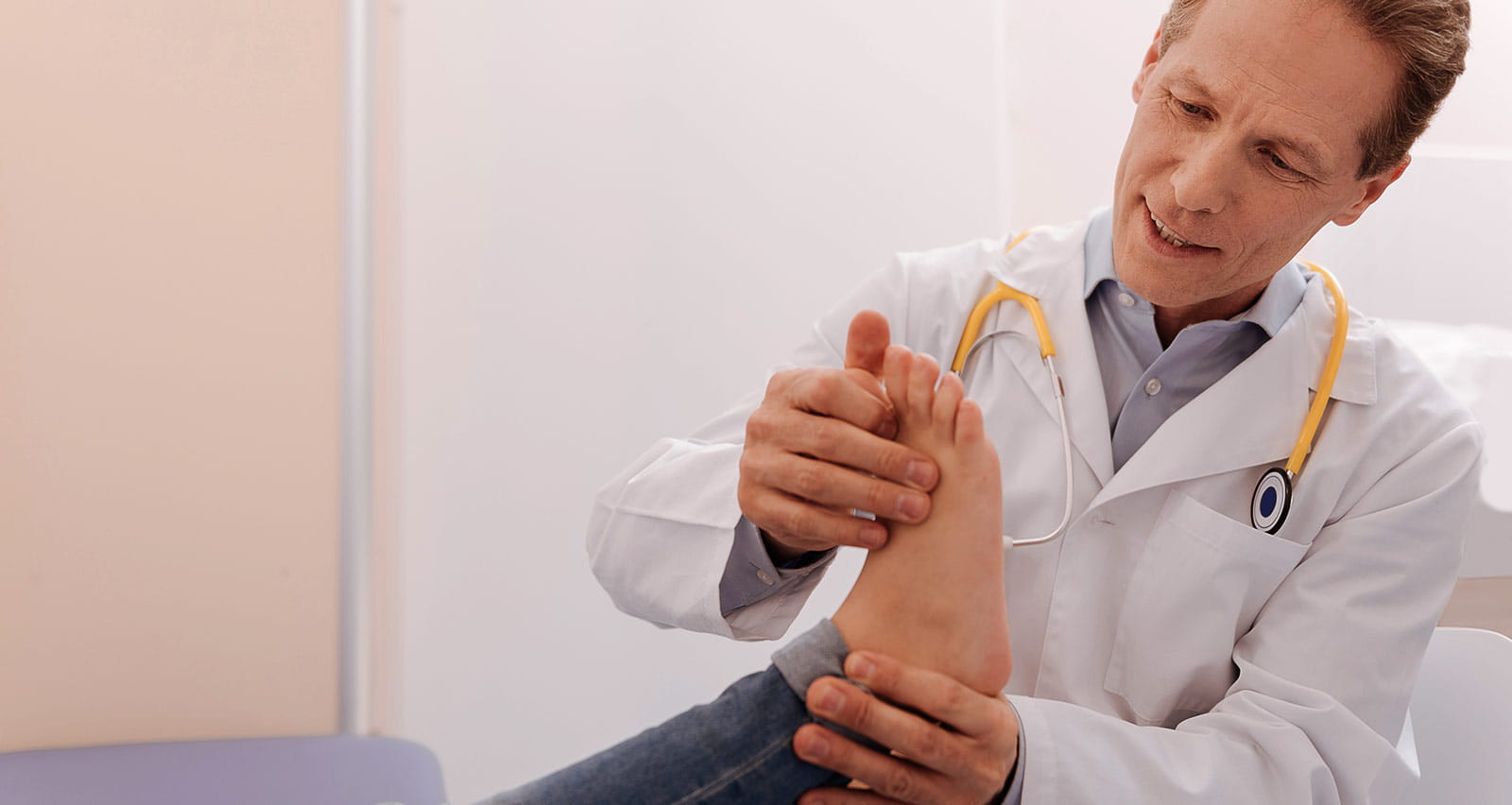
Expert Care for Osteochondral Lesions
Also known as osteochondritis dissecans (OCD), this is a joint disorder in which a segment of bone under the cartilage of a joint dies and begins to separate from the rest of the bone. The fragment can then break loose, causing mild to severe pain and often affects mobility in the ankle and foot.
The condition occurs most commonly in the knee, but can also occur in the ankle, big-toe, elbow and other joints.
Schedule an Appointment
The orthopedic specialists at University Hospitals have the advanced skills and experience to treat all foot and ankle conditions, including osteochondritis dissecans. To schedule an appointment, call 216-220-9088 or schedule online.
Causes & Risk Factors for Osteochondral Lesions in the Ankle
OCD in the ankle may develop after repeated stress, trauma, sprain or fracture of the talus – the bone that makes up the bottom part of the ankle. Such injuries can reduce or cut off the blood supply to the bone and lead to OCD.
The disorder occurs most often in children and adolescents between the ages of 10 and 20, particularly those who are very active in sports. There may also be a genetic component, making some people more likely to develop the condition.
Symptoms of Osteochondral Lesions
Symptoms of OCD can occur immediately after injury or months later, particularly if high impact activities such as jumping and running continue. If the loosened fragment of bone stays in place, there may not be any symptoms. However if the bone piece becomes partially or completely detached, symptoms may include:
- Pain triggered by physical activity
- Joint instability or weakness
- Swelling and tenderness of the skin around the joint
- Joint locking in one position
- Decreased mobility of the ankle
Diagnosis of Osteochondral Lesions
The ankle or foot discomfort from OCD is often misdiagnosed as a sprained ankle, or “turf toe” if pain involves the big toe. Without proper diagnosis and treatment, this condition can lead to long-term chronic ankle pain, instability and increase the risk of developing osteoarthritis in the joint.
To diagnose OCD, the foot and ankle orthopedic specialists at University Hospitals will first take a detailed medical and lifestyle history followed by a physical exam of the foot. To confirm or rule out OCD, advanced diagnostic imaging tests will be performed to pinpoint the location of the injury.
Those imaging tests may include an X-ray, which can determine if there was a fracture. More likely, a magnetic resonance imaging (MRI) scan will be performed to determine the precise location and severity of the condition.
Treatment for Mild to Severe OCD
Sometimes, osteochondral lesions can be repaired with rest, immobilization and physical therapy alone, depending on the extent of the damage. Young children, whose bones are still growing, may fully heal without treatment.
If conservative treatments fail to manage symptoms or the condition worsens, surgery may be recommended to repair the damage, restore the blood supply and promote healing.
The foot and ankle orthopedic surgical specialists at University Hospitals use minimally invasive surgical procedures to treat OCD, which may include:
- Removing bone chips and loose cartilage so the bone can heal.
- Drilling into the ankle or foot bone with a tiny, needle-like device to improve blood flow and repair the bone.
- Grafting new bone and cartilage to replace damaged tissues.
Individualized Rehabilitation Program
With or without surgery, patients recovering from OCD will usually require a rehabilitation program after a significant rest period. Rehabilitation may include walking or running on a specialized AlterG treadmill that uses anti-gravity technology to keep weight off the injured ankle or foot. Patients may also be video recorded with DartFish technology while they are walking or running so the care team can monitor their progress.
The University Hospitals orthopedic team also includes a dedicated orthotics specialist who can modify shoes or athletic gear such as boots or skates to prevent recurrences once recovery is complete and full activities are resumed.
Make an Appointment
Our orthopedic experts offer in-person and virtual visits. Call 216-220-9088 or schedule your visit online today.


